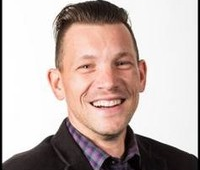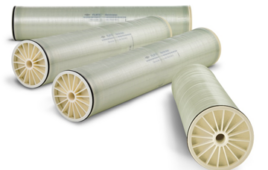Luis J. Villanueva-Rivera, from right, Bryan Pijanowski and Sarah Dumyahn collect data from a remote listening post that records sounds from the surrounding area. Credit: Purdue Agricultural Communication photo/Tom Campbell |
A Purdue
Univ. researcher is
leading an effort to create a new scientific field that will use sound as a way
to understand the ecological characteristics of a landscape and to reconnect
people with the importance of natural sounds.
Soundscape ecology, as it’s being called, will focus on
what sounds can tell people about an area. Bryan Pijanowski, an associate
professor of forestry and natural resources and lead author of a paper
outlining the field BioScience, said
natural sound could be used like a canary in a coal mine. Sound could be a
critical first indicator of environmental changes.
Pijanowski said sound could be used to detect early
changes in climate, weather patterns, the presence of pollution or other
alterations to a landscape.
“The dawn and dusk choruses of birds are very
characteristic of a location. If the intensity or patterns of these choruses
change, there is likely something causing that change,” Pijanowski said.
“Ecologists have ignored how sound that emanates from an area can help
determine what’s happening to the ecosystem.”
Part of his research will be to capture sounds that are
being lost and attempting to restore their value to people. Pijanowski said
natural sounds such as birds chirping, wind rustling through leaves, and even
the absence of noise not only have aesthetic significance, but also can give
people valuable information about what’s happening around them.
Pijanowski has already begun some of the soundscape ecology
work in various natural and human-dominated landscapes around Tippecanoe County
in Indiana.
More than 35,000 recordings were used to characterize the rhythms of the
natural sound and how varying degrees of human development affected those
rhythms. One of the most significant findings was that as human impact in the
landscape increases, the natural rhythms of sound created by the diverse
wildlife population are replaced by low and constant human-produced noise.
“As we continue to become more and more urban, we get
used to the urban sounds which are mostly just noise. We’re so used to blocking
out noise that we block out the natural sounds as well,” Pijanowski said.
“Animals create sounds for a reason: to convey information. Noise carries
no information with it generally. The sound of a car passing by is important,
but it is simply making noise as a result of friction. The noise it makes has
no information. It’s not an intentional signal being produced by a sentient
being.”
Pijanowski said society has become more visual and he
wants to restore the importance of sound to our experiences. He said
psychologists call the broader disconnect Nature Deficient Disorder, and
Pijanowski believes that reconnecting with sounds will open doors to
reconnecting with nature—something he views as important to being
environmentally conscious.
“If we disconnect with the sounds of nature, will we
continue to respect and sustain nature?” Pijanowski said.
While Pijanowski is eager to develop research projects in
soundscape ecology, he acknowledged a few challenges associated with starting a
new scientific field.
There is no established vocabulary for the field, and
Pijanowski anticipates creating new terminology and has already borrowed from
related fields. For example, he uses the terms “biophony” (the sounds
created by organisms) and “geophony” (the sounds of non-biological
entities such as wind and thunder) from the field of acoustic ecology, which
focuses on using natural sounds to create musical compositions.
This new field is able to move forward because
computerized sensor technologies are becoming reliable and cost-effective.
Soundscape ecology is dependent on sensor technology and custom software. To
bolster interest, Pijanowski is making software tools and sound file examples
available to help researchers interested in becoming involved in the research.
“It is really difficult to find people who think the
same way since it’s such a new field,” Pijanowski said. “There are
really only a handful of us so far. But we believe in the science and hope to
attract others who will make significant contributions.”
Those others will come from a wide array of fields.
Pijanowski said he’ll work with researchers in spatial ecology, land-use
planning, conversation biology, bioacoustics, cognitive psychology, informatics,
and acoustic engineering, to name a few.





